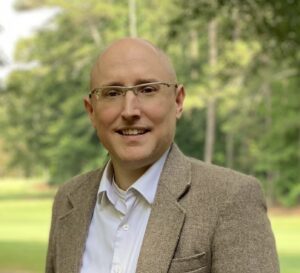No one (except perhaps the newest comers) should have been surprised by the information in Ben Nelms’ recent article on the dire state of Fayette County’s water systems.
Over the last 20 years or so, there have been numerous incidents of drinking water contamination by a variety of pathways, with a large proportion of cases showing evidence of lack of knowledge or sloppy implementation.
Nevertheless, the same management remains in place.
It is thrilling that our county is growing in such a positive mode, but with our historic difficulty in managing one of the two most fundamental resources, how are we going to provide clean water for the greatly increased demand? Have the industries and people moving here been made aware of the unstable situation and the possibility that municipal water supplies may be readily contaminated?
Dennis Chase, a retired Fish and Wildlife Service biologist, recounted in a recent Citizen op-ed column his personal frustration with trying for over 20 years to volunteer his expertise to help bring sanity and dependability to Fayette’s water purification and delivery operations.
I don’t know of any reaction from the public to his alarming tale. Every time there is an incident — whether it be color, taste, composition or odor-related — patrons receive “Dear Customer” letters from the water system explaining away the problems or stating that they are non-existent.
These letters are always convoluted, often self-contradictory and low on scientific logic. Indeed, their purpose appears to be to dampen public reaction and not to convey real information.
For example, chloroform is a product of chlorine and methane. The age of piping or the length of time water spends in pipes is irrelevant when it comes to explaining chloroform formation.
As I know from my years of experience working with membrane separation (at Southern Research and Georgia Tech Research Institutes and the Eastman Kodak Company) municipal tap water can contain large amounts of filterable contaminants. We should remember that water purification is not a new or unique concept. Nor is it practiced only here and there, but — as Dr. Seuss might have said — it is practiced everywhere. In fact, there are well documented procedures and protocols for every aspect of municipal water purification.
Traditionally, communities and cities around the world have been required to meet standards for purity, usually by demonstrating that their raw water has undergone a designated series of processing steps, such as sand filtration and chlorination. Reverse osmosis and electrodialysis are examples of more modern approaches.
Contrary to the way that the production of trihalomethanes (TTHM) has been interpreted to the public in this case, the controlling factor for chloroform production is what is called the Total Organic Content or TOC. (Sometimes TOC – the total concentration of living and non-living organic matter in the raw water before it enters the purification plant — is bluntly referred to as crap, or by an even more explicit four-letter term.)
The amount of chlorine needed to disinfect a given volume of sewage is directly proportional to its TOC. Double the amount of TOCs in the raw water, and you must double the amount of chlorine needed for total disinfection, resulting in doubling the amount of TTHM formed.
As Fayette County’s growth has accelerated, so has the TOC of its streams, including those that provide drinking water to the populace.
No single purification method will solve our problem. In my opinion, the only approach with any chance of success is to reduce the TOC of the raw water, possibly by pre-filtration before it enters the plant.
This, of course, will mean adding another processing step. It is always expensive, but realistically, inevitable. For more information on chloroform in drinking water, see: www.eco-usa.net/toxics/chemicals/chloroform.shtml.
The sooner we get serious about this job, the better!
Lois M Speaker, Ph.D.
Senior Research Scientist, retired
Peachtree City, Ga.











Leave a Comment
You must be logged in to post a comment.